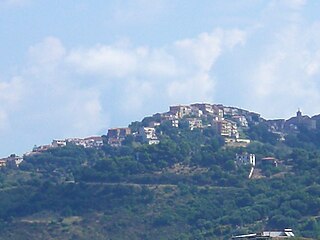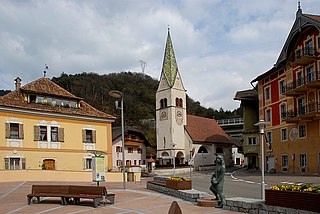Related Research Articles

Demographic features of the population of Italy include population density, ethnicity, education level, health of the populace, economic status, religious affiliations and other aspects.

The Italian National Institute of Statistics is the primary source of official statistics in Italy. The institute conducts a variety of activities, including the census of population, economic censuses, and numerous social, economic, and environmental surveys and analyses. Istat is the largest producer of statistical information in Italy and is actively involved in the European Statistical System, which is overseen by Eurostat.

Corzano is a town and comune in the province of Brescia, in Lombardy, Italy. As of 2011 its population was 1,397.

Aquara is a town and comune in the province of Salerno in the Campania region of south-western Italy.

Centola is a town and comune in the province of Salerno in the Campania region of south-western Italy.

Ispani is a town and comune in the province of Salerno in the Campania region of south-western Italy.

Ottati is a town and comune in the province of Salerno in the Campania region of south-west Italy. As of 2011 its population was of 680.

Kastelbell-Tschars is a comune (municipality) in South Tyrol in northern Italy, located about 40 kilometres (25 mi) northwest of Bolzano.

Karneid is a comune (municipality) in South Tyrol in northern Italy, located about 4 kilometres (2.5 mi) east of the city of Bolzano and a village. It is also the location of Karneid castle.

Waidbruck is a comune (municipality) in South Tyrol in northern Italy, located about 20 kilometres (12 mi) northeast of Bolzano.

Salorno sulla Strada del Vino is the southernmost comune (municipality) and a village in South Tyrol in northern Italy, located about 30 kilometres (19 mi) southwest of the city of Bolzano. It is one of only five mainly Italian-speaking municipalities in South Tyrol.

St. Pankraz is a comune (municipality) in South Tyrol in northern Italy, located about 20 kilometres (12 mi) northwest of the city of Bolzano.

Sarntal is a valley and a comune (municipality) in South Tyrol in northern Italy, located about 15 kilometres (9 mi) north of the city of Bolzano. The municipality comprises several towns and villages. The largest one, seat of the mayor and council, is Sarnthein.

Terlan is a comune (municipality) in South Tyrol in northern Italy.
Tiers is a comune (municipality) in the province of South Tyrol in northern Italy, located in the Tierser Tal about 15 kilometres (9 mi) east of the city of Bolzano.

Tirol is a comune (municipality) in the province of South Tyrol in northern Italy, located about 25 kilometres (16 mi) northwest of the city of Bolzano.

Ulten is a comune (municipality) in South Tyrol in northern Italy, located about 35 kilometres (22 mi) west of Bolzano.

Roburent is a comune of the Province of Cuneo in the Italian region Piedmont. It is located about 80 kilometres (50 mi) south of Turin and about 30 kilometres (19 mi) southeast of Cuneo. As of 1 January 2009 its population was 552. The comune extends over a largely wooded area of 29.9 km2 (11.5 sq mi) ranging in elevation from 580 to 1,819 metres above sea level and straddling the Corsaglia and Casotto valleys. It borders the municipalities of Frabosa Soprana, Garessio, Montaldo di Mondovì, Ormea, Pamparato, and Torre Mondovì.

In 2021, Istat estimated that 5,171,894 foreign citizens lived in Italy, representing about 8.7% of the total population. These figures do not include naturalized foreign-born residents as well as illegal immigrants, the so-called clandestini, whose numbers, difficult to determine, are thought to be at least 670,000.
References
- ↑ "Istat announces 2011 Census population count (press release)" (PDF). Istat, 19 December 2012. Retrieved 11 July 2016.
- ↑ National Institute of Statistics, Italy. "A new strategy for the 2011 Italian Population Census. Product innovations and the compliance with CES Recommendations" Paper presented at the joint UNECE/Eurostat meeting on Population and Housing Censuses, Geneva, 28-30 October 2009.